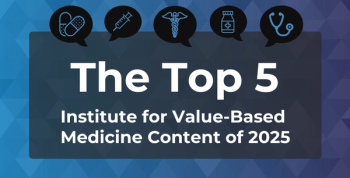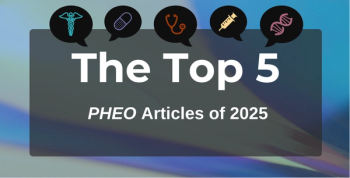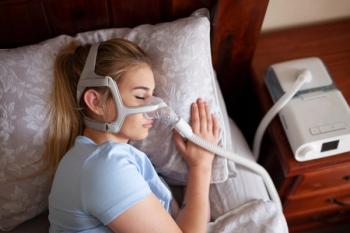
Breathomics: A Low-Cost Solution for Early Lung Cancer Diagnosis?
Key Takeaways
- Breath analysis using VOCs shows promise for early NSCLC diagnosis, achieving 85% accuracy, 86.7% sensitivity, and 83.3% specificity.
- Current lung cancer diagnostic methods are invasive and costly, limiting widespread screening; breath analysis offers a non-invasive alternative.
Study results show that a portable breath analysis device designed for early detection of non–small cell lung cancer may distinguish between patients with the disease and healthy individuals.
Researchers from Humanitas University and University Hospital of Bari report promising results of a new study exploring the use of breath analysis to diagnose
The study involved 60 participants—30 patients with confirmed NSCLC and 30 healthy controls—whose breath samples were analyzed using a portable gas chromatography device developed by the research team. They identified the main potential VOCs as acetone, octane, and 6-methyl 5-heptane 2-one or similar isomers. These VOCs were derived mainly from alkane families, which have been previously implicated as potential biomarkers in lung cancer and other metabolic conditions.2,3
Breath samples were analyzed using both and machine learning techniques. After dividing the samples into training and testing sets (20 NSCLC and 20 healthy controls for training, and 10 each for testing), the system demonstrated an overall accuracy rate of 85%. More specifically, it achieved a sensitivity of 86.7% and a specificity of 83.3%.
Lung cancer remains the leading cause of cancer deaths worldwide, with NSCLC accounting for approximately 85% of all cases.4 Early detection significantly improves survival rates, particularly for stage I NSCLC, where patients have a 5-year survival rate exceeding 60% when treated early. However, many cases are diagnosed at later stages when treatment options are more limited and have a worse prognosis. The authors note, "Unfortunately, current methods for early detection of lung cancer are not very reliable."
Currently, most lung cancer diagnoses rely on invasive procedures or expensive imaging techniques, which limit widespread screening efforts. The study's authors add, "The findings suggest that breath analysis could play a significant role in identifying lung cancer earlier, potentially improving patient outcomes and offering an alternative to more invasive diagnostic methods."
Breathomics, the study of VOCs, has shown promise in diagnosing conditions like colorectal cancer, asthma, and chronic obstructive pulmonary disease (COPD).5 However, its application in lung cancer diagnosis has been limited by the complexity and cost of current analytical platforms, which often rely on bulky gas chromatography-mass spectrometry systems unsuitable for mass screening.
Although the results of this study are promising, the authors also acknowledge several limitations, including the small sample size and the study’s single medical center design. Additionally, most of the patients were older patients and diagnosed with advanced NSCLC, which may have influenced the results. Personal variations in VOC profiles between patients may prove challenging when using breath analysis technology.
Another challenge lies in refining the machine learning algorithms used to analyze the chromatograms. As the sample size increases, more advanced techniques, such as neural networks or random forests, could improve the accuracy and stability of the diagnostic model, potentially reducing the risk of false positives and improving overall diagnostic performance.
As the study's authors note, "The results of all the studies on VOCs are scarcely comparable since there is a large variation in sample size, diverse sample, collection approaches, and different analytical and data processing techniques." They also add that "these results are a significant step towards creating a low-cost, user-friendly, and accessible tool for rapid on-site lung cancer screening."
Further research and more extensive trials will determine whether this innovative approach can be widely implemented, potentially changing the landscape of lung cancer diagnosis.
References
1. Brascia D, De Iaco G, Panza T, et al. Breathomics: may it become an affordable, new tool for early diagnosis of non-small-cell lung cancer? an exploratory study on a cohort of 60 patients. Interdiscip Cardiovasc Thorac Surg. 2024;39(3):ivae149. doi:10.1093/icvts/ivae149Fu
2. Fu XA, Li M, Knipp RJ, Nantz MH, Bousamra M. Noninvasive detection of lung cancer using exhaled breath. Cancer Med. 2014;3(1):174-181. doi:10.1002/cam4.162
3. Jia Z, Zhang H, Ong CN, et al. Detection of lung cancer: concomitant volatile organic compounds and metabolomic profiling of six cancer cell lines of different histological origins. ACS Omega. 2018;3(5):5131-5140. doi:10.1021/acsomega.7b02035
4. Wang X, Romero-Gutierrez CW, Kothari J, Shafer A, Li Y, Christiani DC. Prediagnosis smoking cessation and overall survival among patients with non-small cell lung cancer. JAMA Netw Open. 2023;6(5). doi:10.1001/jamanetworkopen.2023.11966
5. Ibrahim W, Carr L, Cordell R, et al. Breathomics for the clinician: the use of volatile organic compounds in respiratory diseases. Thorax. 2021;76(5):514-521. doi:10.1136/thoraxjnl-2020-215667
Newsletter
Stay ahead of policy, cost, and value—subscribe to AJMC for expert insights at the intersection of clinical care and health economics.







































